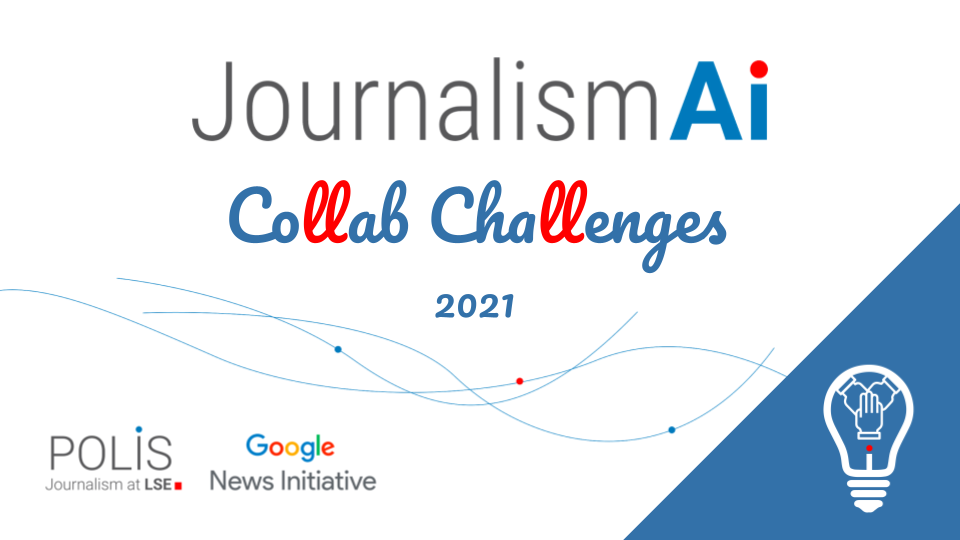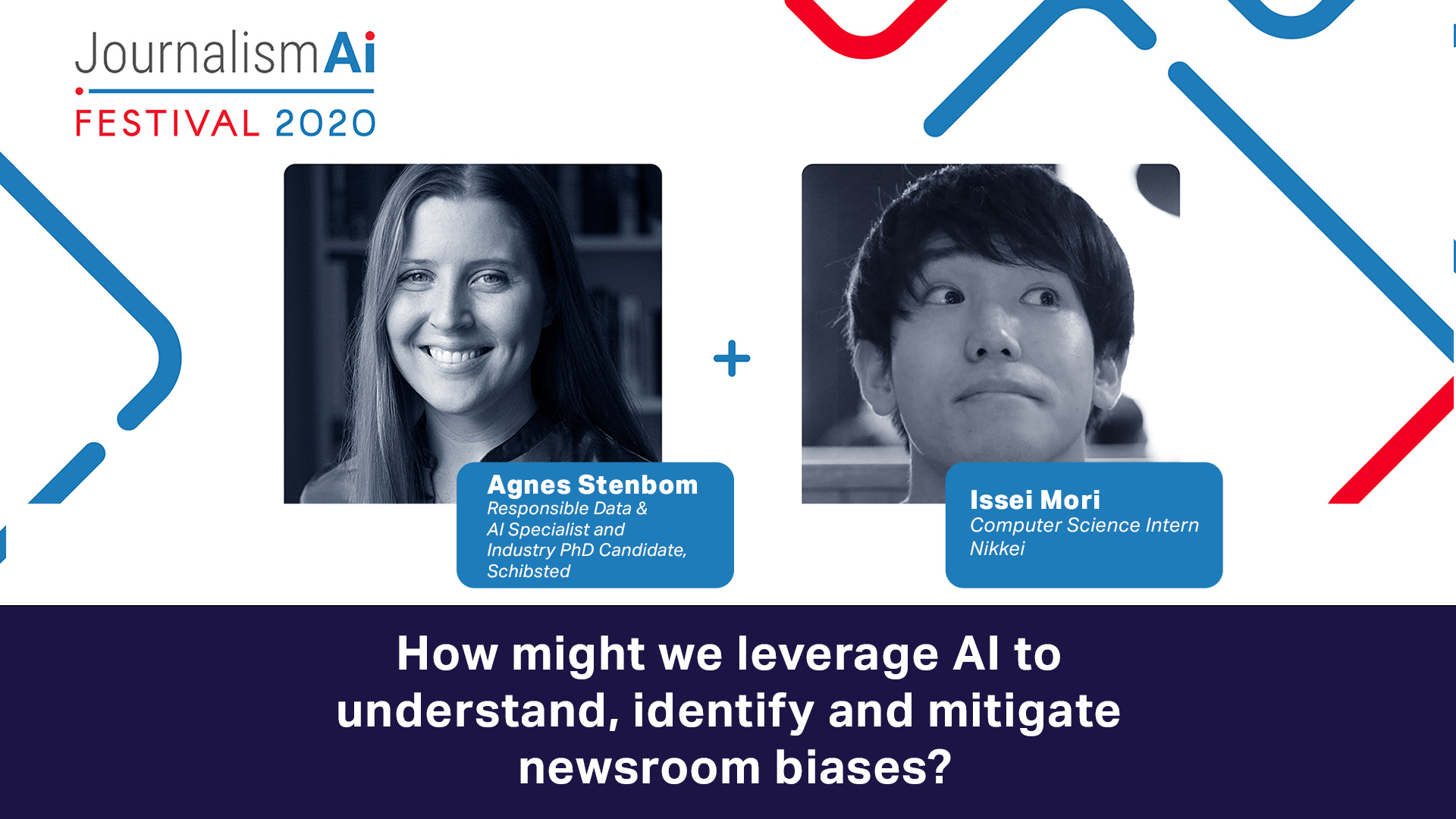As we launch the 2021 JournalismAI Collab Challenges, we are looking back at the lessons learned from last year, in our first effort at bringing together newsrooms worldwide to experiment with AI. Over 20 news organisations from across the world worked in teams to imagine and test new AI-powered ideas with the support of a team of expert coaches and mentors.
Ana Jakimovska (Chief Product & Technology Officer at Culture Trip), Dmitry Shishkin (Independent digital consultant with 20+ of experience at BBC World Service) and Jeremy Gilbert, (Knight Chair for Digital Media Strategy at Northwestern University’s Medill School) are three of the mentors who supported the Collab teams last year. At our Festival last December, they shared what they have learned from helping newsrooms to work together on developing innovative AI-powered solutions and why they believe that collaboration has a key role to play in defining how AI technologies can support journalism. This is a summary of the key points they made.
“I believe content and news have an incredibly important role to play in society. And we should help journalists with any sort of technology that is available to make their work easier, whilst feeling safe and secure, and morally and ethically right.”
Ana Jakimovska, CTO & CPO, Culture Trip
Key Takeaways
- Collaboration can make AI more accessible to newsrooms of all sizes and get them the knowledge they need to then be able to approach external providers and get the right tools they need.
- Algorithms can help a newsroom do things that would otherwise not be possible in terms of speed and scale. You need to give it the right input, though. The structure of the content is key when working with AI tools.
- AI implementation is a challenge. We need to address it together, by involving more people from all departments in the conversation around AI and journalism.
When newsrooms approach and implement AI methods in their processes, one of the first lessons is the importance of identifying and structuring the content you’ll be working on. Algorithms by themselves don’t understand everything there is to know about a story, or make smart recommendations and point journalists towards news stories. Journalists need to be specific about what is the problem they’re trying to solve and what’s the techniques that they’re trying to use to solve them.
Different artificial intelligence techniques require different understandings of what’s there. If you give the right inputs, the machine can help you do things that would otherwise not be possible in terms of speed or scale.
Throughout the Collab, the different groups developed a deep understanding of each part of the process of approaching AI-powered tools, notes Ana Jakimovska. The understanding of where AI can support newsrooms and journalists is now there, however, what is problematic is the lack of resources to do it at pace.
The implementation of AI-powered tools in newsrooms is indeed one of the biggest challenges. According to Jeremy Gilbert, it can be compared to when personal computers in the 1980s and 1990s were a requirement, not an option, but lots of people in the newsroom refused to accept them. In the same way, automation and AI techniques are running into implementation problems because lots of people in the newsroom are not yet part of these conversations.
At the same time, newsrooms are resistant and approach AI methodologies with caution, often focusing on the problem that machine learning and statistical methods could cause as opposed to the solutions and advancement they could bring.
From his experience as Director of Strategic Initiatives at The Washington Post, Jeremy shares a secret about the success with ML and automation projects: to start with things that are lower priorities for the organisation. Instead of asking the whole newsroom to stop doing the thing that is most familiar, the focus can be on innovating around the edges and dramatically improving the experience for a smaller group of people. In doing so, you’ll be able to get the credibility to then bring it back into the core function.
Exchange of ideas between news organisations, and collaborative initiatives such as the Collab, are essential for the advancement of the relationship between AI and journalism. Although simple conversations might seem ephemeral, notes Dmitry, they bridge the gap. Sharing the learning curve with others helps share the knowledge with newsrooms of all sizes, which are then able to ask providers the right tools they need. There is no need to develop everything all by for yourself if you can actually go and learn from and with others.
Additional Resources
- In collaboration we trust: Opening the JournalismAI Collab Challenges
- Powering ahead: JournalismAI’s mission in 2021
- Explore the work of the 2020 Collab teams
This article was written by Sabrina Argoub, JournalismAI Community Coordinator.
The article includes the main takeaways from one of the sessions of the 2020 JournalismAI Festival. You can watch all the Festival recordings on YouTube.
JournalismAI is a project of POLIS and it’s powered by the Google News Initiative.






